Exploring USB-C and iPhone Charger Compatibility
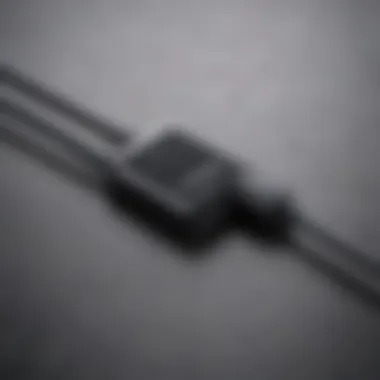
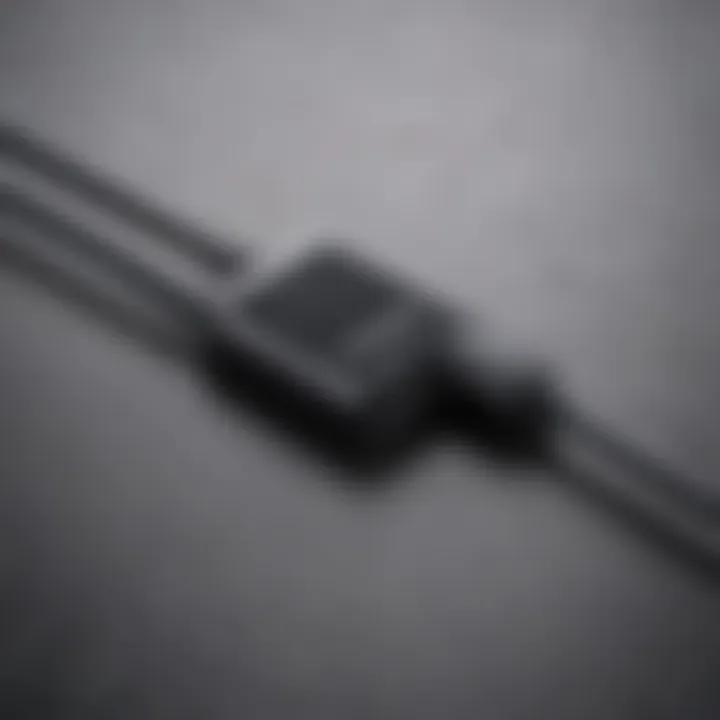
Intro
The transition to USB-C ports represents a noteworthy change in Apple's ecosystem, notably impacting how users charge their devices. Understanding this evolution not only benefits iPhone users but also highlights the broader implications for technology and accessories. \n\nThis article examines the ins and outs of USB-C compatibility for iPhones, emphasizing its technical aspects, compatibility dilemmas, and advantages. Additionally, it aims to bring clarity to users' concerns while optimizing their experience with the technology.
Product Overview
Prologue to the Apple product being discussed
Apple's integration of USB-C ports marks a significant shift from the Lightning connectors historically used in its product lineup. With the advent of the USB-C charging standard, users can expect broader compatibility with numerous devices, simplified charging experiences, and increased data transfer speeds.
Key features and specifications
The most vital features of the USB-C port include:
- Reversible design: This enables connectivity regardless of orientation.
- Higher wattage: This capability supports faster charging especially with the more powerful devices like newer MacBooks.
- Data transfer speeds: USB-C can achieve transfer rates of up to 10 Gbps, far exceeding that of prior models.
Design and aesthetics
USB-C cables tend to have a clean and modern aesthetic, aligning well with Apple’s focus on streamlined design. The port’s compact nature is particularly appealing for balancing performance and size, making it an asset in any tech enthusiast’s toolkit.
Performance and User Experience
Performance benchmarks
When analyzing performance, USB-C exhibits superior charge capabilities, especially with Apple’s 20W power adapter. Testing shows that many recent iPhones charge to 50% in about 30 minutes with the correct USB-C charger. This improvement signifies Apple's commitment to efficiency and user satisfaction.
User interface and software capabilites
Incorporating a USB-C port simplifies the user experience by standardizing connections across multiple devices. This uniformity reduces users' need to manage varying cables, streamlining one’s daily tech interactions.
User experiences and feedback
Overall, feedback from users leans positive. With significant advantages around charging speed and enhanced versatility, reports suggest satisfaction levels have risen since adopting USB-C. Some users, however, express mild frustrations when compatibility issues arise with older accessories.
Tips and Tricks
How-to guides and tutorials for optimizing the Apple product's performance
- Utilize original accessories: Always use official Apple charges to ensure compatibility and safety.
- Update software regularly: Keeping your iPhone's software current enhances performance and security.
Hidden features and functionalities
One notable feature involves the ability to quickly charge other devices using an iPhone with appropriate settings enabled and USB-C OTG support.
Troubleshooting common issues
If you encounter slow charging or connection problems, ensure the cable and charger used are functioning properly. Adapters may impact efficiency, thereby using Apple-certified hardware mitigates such concerns.
Latest Updates and News
Recent developments in software updates and new features
Apple has regularly integrated optimizations to their iOS, such as improved battery management systems when using USB-C charging. Keep an eye on the latest iOS releases to take advantage of these updates.
Industry news and rumors surrounding upcoming products
News indicates that Apple may continue deepening its USB-C integration beyond the iPhone to future releases across various product lines, which further normalizes this technology.
Events and announcements from Apple
Stay tuned for events or keynotes where Apple commonly unveils pivotal information about their hardware and software transitions.


In summary, USB-C represents a practical advancement in technology for Apple users, merging usability with performance. Equipping oneself with the right knowledge can amplify your charging experience and overall satisfaction.
Prelims to USB-C Technology
In recent years, the technological landscape has evolved rapidly, with charging standards leaving significant impacts on device compatibility. The introduction of USB-C technology is no exception. Understanding USB-C is crucial for iPhone users, especially with Apple's shift towards this universal port. USB-C not only enhances power delivery but also amplifies data transfer speeds, addressing the demands of modern devices and user expectations alike.
What is USB-C?
USB-C, or Universal Serial Bus Type-C, is a connector standard that allows transmission of both power and data. Characterized by its small, symmetrical design, it can be plugged in either way, which simplifies the user experience. USB-C handles various functions, including powering devices, supplying data, and connecting to displays, all within one compact form factor. Its design aims to phase out older connectors such as USB-A and USB-B, infusing more versatility into today’s tech environment.
History of USB Interfaces
The evolution of USB interfaces traces back to the mid-1990s. Originally developed to streamline connections between peripherals, the first USB standard was USB 1.0, launched in 1996. Over the years, we saw numerous iterations, with USB 2.0 arriving in 2000 and significantly improving speed and usability. Then in 2008, USB 3.0 introduced a considerable boost in transfer rates. However, it was not until the advent of USB-C in 2014 that a multi-functional connector realized broad-based applicability. USB-C emerged as a response to the limitations of previous USB types, integrating innovative technology and addressing the varied needs of consumers and manufacturers alike.
Benefits of USB-C over Previous Standards
Transitioning to USB-C brings numerous advantages, particularly in terms of efficiency and ease of use.
- Symmetrical Design: Allows easy connection without needing to worry about orientation.
- Increased Power Delivery: USB-C supports up to 100 watts of power, enabling quicker charging of laptops, tablets, and smartphones.
- Higher Data Transfer Speeds: With USB 3.1 and later versions, users benefit from data rates that can reach up to 10 Gbps or higher, facilitating quick file transfers.
- Universal Compatibility: USB-C can connect a wide range of devices, including smartphones, tablets, laptops, and other peripherals.
In summary, USB-C redefines how devices interact, simplifying and expediting processes that involve charging and data transmission. This article will delve deeper into the technical specifications and implications of the adoption of USB-C in iPhones, addressing critical compatibility concerns along the way.
iPhone Charging Basics
The iPhone charging system is pivotal for ensuring both performance and usability. With the introduction of USB-C technology, the landscape of how these devices are powered is changing significantly. Understanding these dynamics gives users insights into efficiency, accessibility, and best practices for charging their devices. From power ratings to compatibility, the nuances of charging standards are critical for iPhone users navigating the transition from traditional solutions.
Charging Standards for iPhones
Charging standards govern the way iPhones receive power, influencing everything from charging speed to device safety. Most modern iPhones utilize a blend of USB-PD (Power Delivery) and Quality Assurance specifications to optimize power flow.
- USB-C Power Delivery: This allows for flexible power ratings, enabling quicker charging without overheating.
- Fast Charging Capability: Devices must support at least 18-watt output for fast charging. Several adapters and cables can assist in this process.
- AC and DC Considerations: Different locations have their wiring specifications that must be kept in mind, particularly when using non-standard chargers.
Using approved chargers compliant with these standards ensures optimal charging experiences. Using non-compliant chargers can lead to not only slower charging times but also potential safety risks, ranging from inefficiency to damage.
Common Charging Port Types on iPhones
Historically, iPhones have utilized both the Lightning and USB-C charging ports. Each type comes with its unique characteristics that cater to various user preferences.
- Lightning Port:
- USB-C Port:
- Introduced in 2012, it became the norm for iPhones.
- Features a reversible design for ease of use.
- Supports audio, data transfer, and video output. Terrain-wide availability means many accessories exist in sound balance.
- Emerging as Apple's new focus in recent models.
- Allows users access to a more extensive ecosystem of devices and accessories.
- Known for its high-speed data transfer capabilities, USB-C is gaining traction due to faster capabilities.
As the landscape evolves, tracking your needs for durability and functionality becomes very crutial. The future of portability with USB-C may drive compatibility better than its predecessors. While current older iPhones utilize Lightning, iPhone users must understand this ongoing transition.
Transition from Lightning to USB-C
The shift from Lightning to USB-C is a significant milestone in the evolution of iPhone charging technology. For years, Apple has integrated the Lightning port into its products, creating a vast ecosystem of accessories. As we transition to USB-C, this change not only affects current users but also shapes the future of the iPhone.
Apple's Shift Towards USB-C
Apple's decision to adopt USB-C reflects a broader industry trend towards a universal charging standard. USB-C offers a range of technical benefits, including faster data transfer and greater power delivery capabilities.
Many audiophiles and cord-cutters welcome the enhancement that USB-C brings. With its reversible design, users can connect the cable in either orientation. This small change can reduce frustration and issues with wear and tear on connectors.
Adoption of USB-C can streamline workflows, simplifying device usage across different platforms. This conversion could also drive manufacturers toward creating an array of more efficient peripherals, enhancing versatility in electronics.
From an operational standpoint, Apple recognizes the necessity of remaining competitive. Apple's latest iPad models have already transitioned to USB-C. These moves create familiarity and expectation among users who own multiple devices. Syncing customs between batteries aids productivity, as space in bags quickly becomes cluttered with different cords.
Impact on Existing Accessories
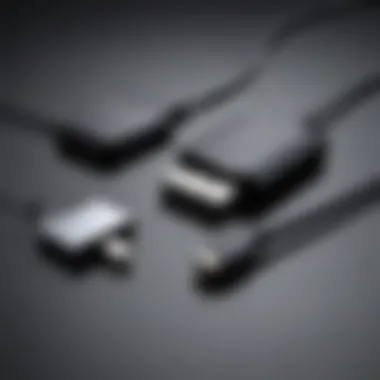
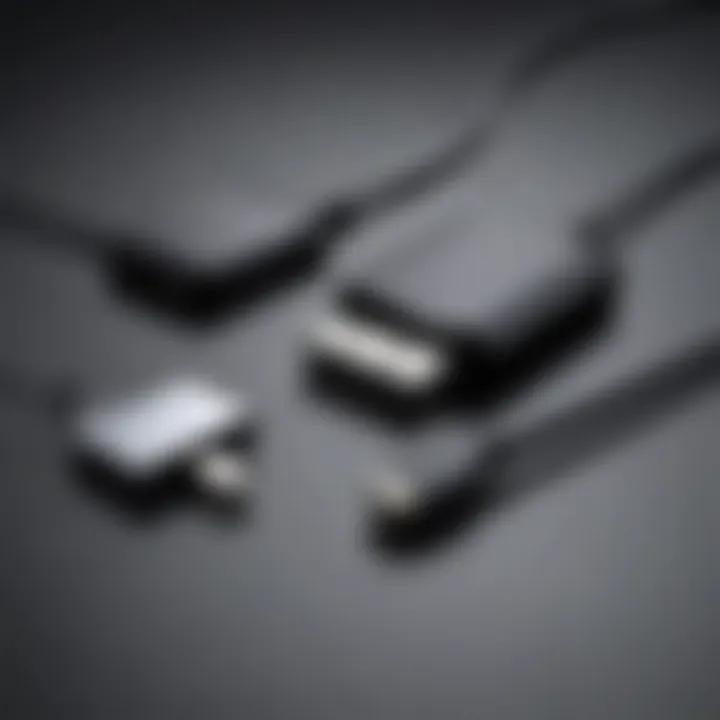
The transition represents a challenge for those who use smartphones, tablets, and accessories containing the Lightning connector. Most importantly, existing Lightning-standard accessories will require adapters to work with new USB-C iPhones. This adds a layer of complexity and potential frustration.
- Accessory Compatibility: Many accessories, such as car chargers and docks, may not operate smoothly with USB-C products.
- Consumer Costs: Adapting to this change could involve purchasing new accessories, which may not be affordable for all users.
- Potential Innovations: Conversely, some will argue it presents opportunities for innovation; new charging solutions or multifunction devices might emerge that take advantage of USB-C’s capabilities.
Individuals concerned about compatibility need to evaluate their ware. Understanding connectivity issues helps make informed purchasing decisions moving forward. As users gradually adopt USB-C enabled devices, they will need to balance the costs of adapting accessories against the benefits of enhanced technology.
Technical Aspects of USB-C Chargers
The technical aspects of USB-C chargers play a vital role in understanding how this technology enhances device functionality. USB-C facilitates not only charging but also data transfer. The design of this port supports advanced power management capabilities and faster data transmission, which benefits iPhone users. The significance of these features cannot be understated, especially as the market shifts towards increasingly high-performance devices.
Power Delivery and Fast Charging
USB Power Delivery (PD) is a protocol that enables faster charging through USB-C. It allows devices to negotiate power levels, adjust the charging current as necessary, and optimize charging speed based on device capability. Traditional USB ports generally offered limited power output, which constrained the fast charging capabilities available in newer models of iPhones.
With USB-C and PD, higher wattage is achievable. For instance, when using a USB-C charger rated at 20 watts or more, certain iPhone models can charge up to 50% faster compared to using a traditional 5-watt charger. This is highly beneficial as it reduces down time, particularly for heavy users who rely on their devices for constant usage.
Using USB-C compatible chargers with proper power ratings ensures efficient charging without causing damage. When selecting a charger, it’s crucial to consider their compliance with USB PD specifications. The transition to this technology should result in a uniform charging experience across multiple device types. This is a distinct upgrade from having multiple chargers for different devices, minimizing cable clutter while maximizing efficiency.
In summary, the enhanced charging efficiency provides significant consumer benefits. The necessity of upgrading to USB-C chargers for those with newer devices is becoming clearer.
Data Transfer Rates
USB-C ports also significantly elevate data transfer rates, another essential technical aspect. They support USB 3.1 standards, which can reach data transfer speeds of up to 10Gbps. Such speeds allow users to transfer HD video files and large datasets promptly. For Apple enthusiasts, this could mean faster backups of essential content and reduced time waiting for file transfers.
To utilize these speeds effectively, competent cables are needed. Older cables may not support the full potential of USB-C, potentially resulting in sluggish performance. Notably, maintaining compatibility with older files and using devices designed for this higher rate can be essential.
Unlike previous USB iterations, data management can streamline operations when using USB-C without the friction experienced earlier. Users can thus enjoy an experience where device interactions become seamless, getting the most out of both the charging and data transfer processes.
Compatibility Considerations
Compatibility is crucial when discussing USB-C technology, especially concerning iPhone users. As Apple makes a transition from the traditional Lightning port to USB-C, understanding the implications of this shift is essential. Users must navigate various aspects of compatibility to ensure their devices charge optimally and maintain functionality.
One significant benefit of USB-C is its universal nature. Unlike the proprietary connector, the Lightning port requires specific cables manufactured by Apple or approved partners. USB-C cables, in contrast, are widely available and compatible with many devices beyond Apple, supporting a vast ecosystem of accessories. This compatibility streamlines the user experience and avoids the inconvenience of needing distinct cables.
However, it is not without challenges. Many consumers face issues when attempting to connect existing equipment to USB-C ports. Older accessories may need adapters or replacements, generating extra costs and potentially limiting functionality. Firms that have invested heavily into Lightning-based accessories now face a choice between adapting to the USB-C ecosystem or possibly losing consumer confidence.
Understanding Compatibility Issues
Compatibility issues arise from differences in specifications and standards. Not all USB-C cables and adapters guarantee performance. For instance, a peripheral device may require Power Delivery, while a regular USB-C cable might not support the requisite wattage. This can hinder charging speeds or result in alarmingly hot devices during use. Hence, knowing the specific protocols for fast charging with USB-CPD, for example, is necessary.
With Apple adopting USB-C, questions are widespread regarding whether existing Lightning-compatible cables can support new devices. The answer often is no. Older Lightning accessories lack the hardware support to utilize the full potential provided by USB-C technology. Accordingly, it remains vital to research compatible accessories if you aim to maximize the performance of your USB-C enabled devices.
Using USB-C with Older iPhones
Utilizing USB-C with older iPhone models introduces some interesting points. The usability largely depends on two thrive factors: adapter quality and cable integrity. Apple has not officially implemented a USB-C port on iPhone models beyond the 14 series, meaning iPhone users will need to use adapters. While some might approach these adapters skeptically, well-made solutions can supplant some compatibility issues admirably.
Unfortunately, mandatory components, like energy delivery restrictions, can cause frustration. For instance, if an older iPhone model experiences charging cutoffs due to impeded energy flow through the adapter, it will negatively affect user experience. Many older models also go through slower charging due to fundamental differences in the system's native capabilities. Users must remain aware that while the adapter allows connectivity, it does not always guarantee a seamless or superior experience.
Ultimately, the shift to USB-C incorporates notable pros and cons, drawing emphasis on compatibility issues. Approaching the discussion of USB-C with older devices or equipment calls for careful consideration to maximize overall engagement and usability. As options expand, thorough research on the best adapters and high-quality cables will make all the difference for often well-informed enthusiasts.
Choosing the Right USB-C Charger
Choosing the right USB-C charger is integral to optimize your iPhone’s charging experience. USB-C technology offers multiple advantages, but realizing these benefits depends on using suitable chargers. The right charger plays a substantial role in charging speed, compatibility, and safety.
Power Ratings and Specifications
When considering a USB-C charger, understanding power ratings is crucial. These ratings indicate how much power a charger can deliver to your device. Meanley, they are measured in Watts (W). For instance, the new iPhone 15 may come with different compatibility ranges, generally seen around 20W, 30W, and even higher ratings. The higher the wattage, the faster your device can charge, assuming the phone’s hardware supports quick charge.
For Apple devices:
- 20W charger can efficiently handle iPhone models like 12, 13, 14.
- 30W charger is suitable for 15 and newer models, enhancing charging speeds while helping maintain battery health.
- Always check the charger’s specifications against your device requirements to avoid issues with slower charging speeds or overheating.
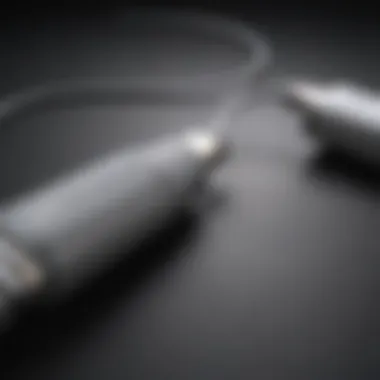
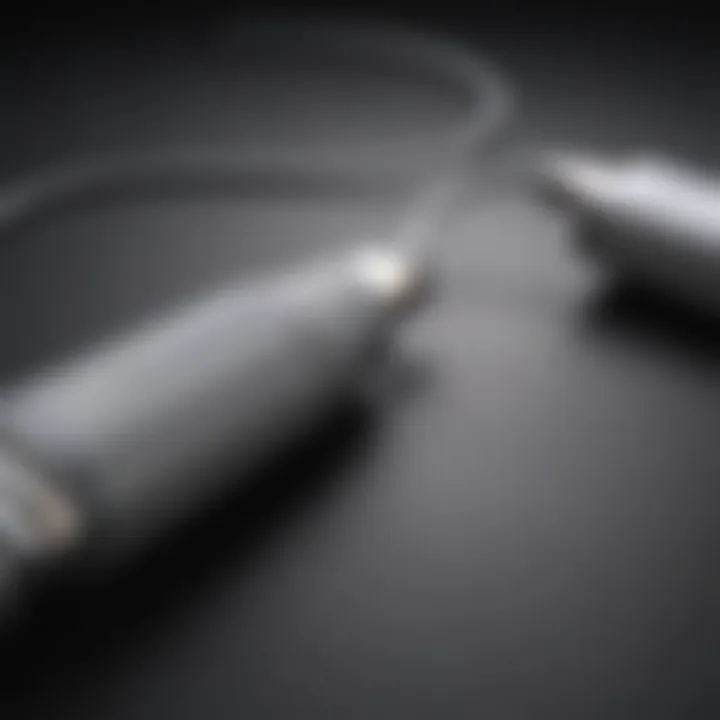
Additionally, you should consider certified chargers. They meet safety requirements and specifications outlined by recognized entities,mostly Apple’s MFi program. Non-certified chargers can sometimes have complications, like overheating or battery damage. So, always opt for trusted sources when purchasing a USB-C charger.
Brands and Recommendations
There are various brands that manufacture USB-C chargers, and selecting a reputable one is essential. Some well-regarded brands in the market include:
- Apple: Their 20W USB-C power adapter is often optimal for iPhones, ensuring compatibility and efficiency.
- Anker: Known for high-quality charging solutions, Anker provides several USB-C chargers with good power delivery standards.
- Belkin: Offering a robust line of products, Belkin chargers maintain safety and efficiency.
User feedback tends to be positive across these brands. Checking their ratings, warranty, and return policies is advisable for confidence in your choice. Online platforms like Reddit often showcase user experiences with different brands, which may guide decision-making. Reading up on any common concerns with specific chargers will also ensure better choices in line with user trends.
Utilizing a high-quality USB-C charger can enhance both the efficiency and longevity of your device’s battery life.
In sum, selecting the right USB-C charger is not merely about convenience or speed. Care in choice could significantly impact usability, charging cycles, and eventually, overall device performance.
User Experience with USB-C Chargers
The user experience with USB-C chargers is paramount when discussing the transition from older charging standards, particularly for iPhone users. Here, the focus is on exploring how this technology influences day-to-day tasks, like charging devices and data transfer. Understanding this experience can aid users in making informed decisions about their charging options.
Real-World Performance
In practical use, USB-C chargers have revealed a variety of performance benefits. Firstly, they simplify the charging process. Even if you have multiple devices, having the same type of charger reduces clutter. This uniformity eases the problem of tangled wires and misplaced chargers. Recent tests show that USB-C chargers are generally faster than previous alternatives, like Lightning or MicroUSB. For an iPhone, charging speeds can improve significantly. This often means less time tethered to the wall and more time using the device.
Moreover, the compatibility of USB-C extends beyond iPhones. Many newer laptop models and tablets also implement USB-C, reinforcing the standardization of charging ports. This allows the use of a single cable across multiple devices, which promotes convenience. According to various user surveys, many have expressed satisfaction with the speed and convenience afforded by USB-C.
Common User Concerns
Despite the benefits, users often voice some common concerns. One issue that arises involves compatibility with older devices. Users may find that their existing accessories do not connect to a USB-C charger without the need for an adapter. If you own older charging docks, these might not function properly with the latest iPhones. There are also concerns regarding the quality of less expensive third-party chargers, which might not meet safety standards.
Another point of concern is data transfer rates. While USB-C typically offers high-speed options, not all cables support the same transfer speeds. Some may fail to deliver the equivalent performance users have come to expect from their devices. In rare instances, this may lead to performance issues during data syncing.
Future of iPhone Charging with USB-C
The shift to USB-C charging presents a substratae of changes in how iPhone users experience charging their devices. This transition is pivotal, as it aligns Apple products more closely with global standards for charging technology. USB-C not only enhances compatibility but also optimizes performance in several facets of device utilization. The ramifications following this shift are already being recognized, influencing future specifications of not only iPhones but also other electronic devices.
Predictions and Trends
As the industry evolves, certain predictions become increasingly clear. One of the most significant trends will be an oligopolistic-like focus on universal compatibility. It is possible that more accessories will adhere to USB-C standards. This trend could reduce the number of various charging cables and devices users must manage daily.
- Increased adoption: More manufacturers will likely embrace USB-C as a standard, not just for charging but also for data transfer.
- Convergence of devices: As appliances unify around this standard, diverse electronic vastly diverse electronics may require only design followed in one direction.
This trend suggests a beneficial overhaul, where users experience a single, efficient way to connect disparate gadgets. The growing complexity is likely to subside as layouts become integrated toward simplified capabilities. Anticipating features like faster charging and seamless data transfer becomes graspable in a landscape fully embraced by USB-C.
Innovative Developments in Charging Technology
The shift to USB-C goes beyond mere kabels. Innovations in storage, power efficiency and overall energy management reflected last advancements in this realm.
For instance, technologies such as Power Delivery not only maximize charging effectively but bring flexibility to the table.
- Smart charging: Developments enable devices to communicate their charging requirements. This lucid dialogue can lead to minimized battery wear and tailors power distribution intelligently.
- Battery technology improvements: New battery chemistry may complement overlapping distribution to allow faster recharge while sustaining longevity.
Looking towards the future, refining charging technology stands crucial. The outcomes of USB-C’s adoption can lead to a marked increase in the general technological,$_us. Adaptable methodologies are forming at this junction, aimed at making our interaction efficacious while bolstering cleaner integration into our lifestyles.
"Apple’s move forward with USB-C herald a significant update toward a symbiotic tech atmosphere as acclaimed manufacturers work collaboratively on a shared stage."
As progress develops, a synergy without daunting duplication becomes prevalent. This is expected to redefine user perspectives about their devices, providing coach to power sustainability while focusing more on functional conveniences. It marks a considerable step into unforeseen,wstrengthening final structure in modern life.*
Finale
As we reflect on the evolution and the significance of USB-C technology in the realm of iPhone charging, it's vital to grasp the multifaceted elements discussed in this article. The transition to USB-C not only represents a shift in how we connect our devices but also opens the door to improved performance elements. Adopting this technology addresses specific pain points that users faced with previous charging interfaces like the Lightning connector.
Recap of Key Points
- The benefits of USB-C are clear, covering improved speed in charging and data transfer. This has a substantial impact on user satisfaction.
- iPhone compatibility with USB-C may require certain considerations, especially for older accessories. Transition strategies have been suggested throughout this discussion.
- Understanding power delivery enables iPhone users to select chargers that enhance device performance effectively. Based on listed key specifications, consumers can be smarter about their choices.
Final Thoughts on USB-C for iPhone Users
For iPhone users, embracing USB-C is essential. The advantages in fast charging and universal compatibility cannot be overstated. Users must remain vigilant to avoid potential pitfalls regarding device compatibility. Exploring future options is crucial as they have a wide array of choices available to them. Engaging with this evolving standard will not only improve current usage but also pave the way for a more streamlined future in device connectivity.



